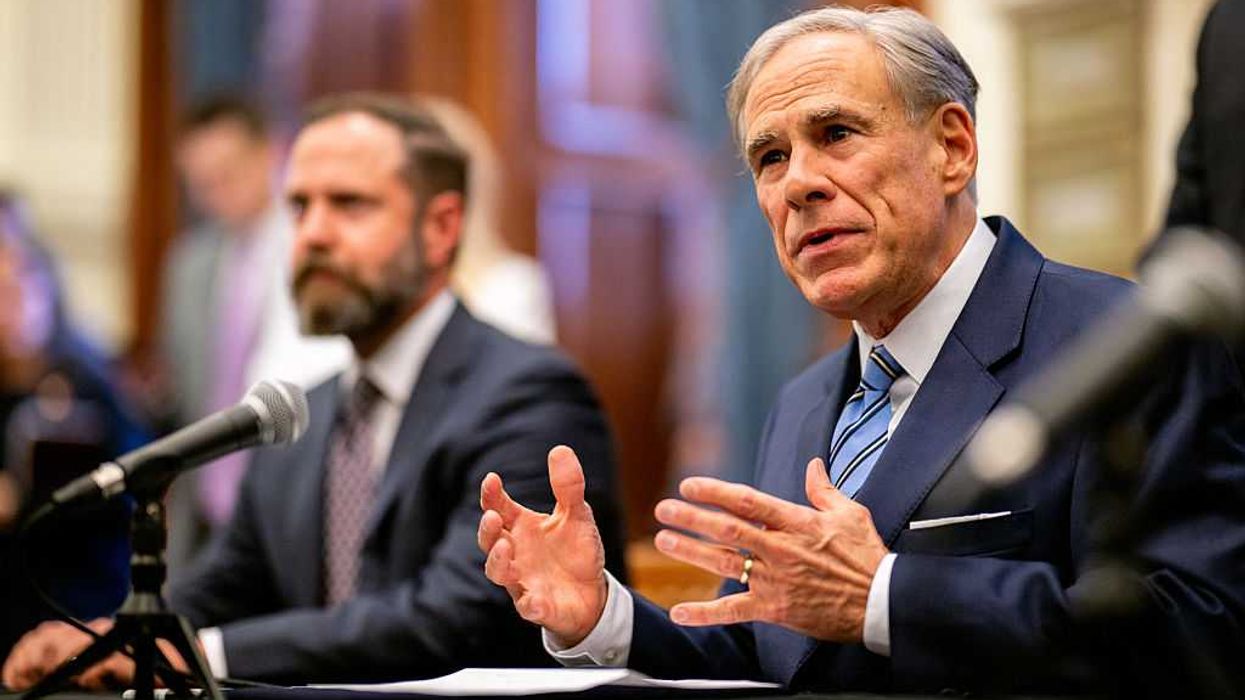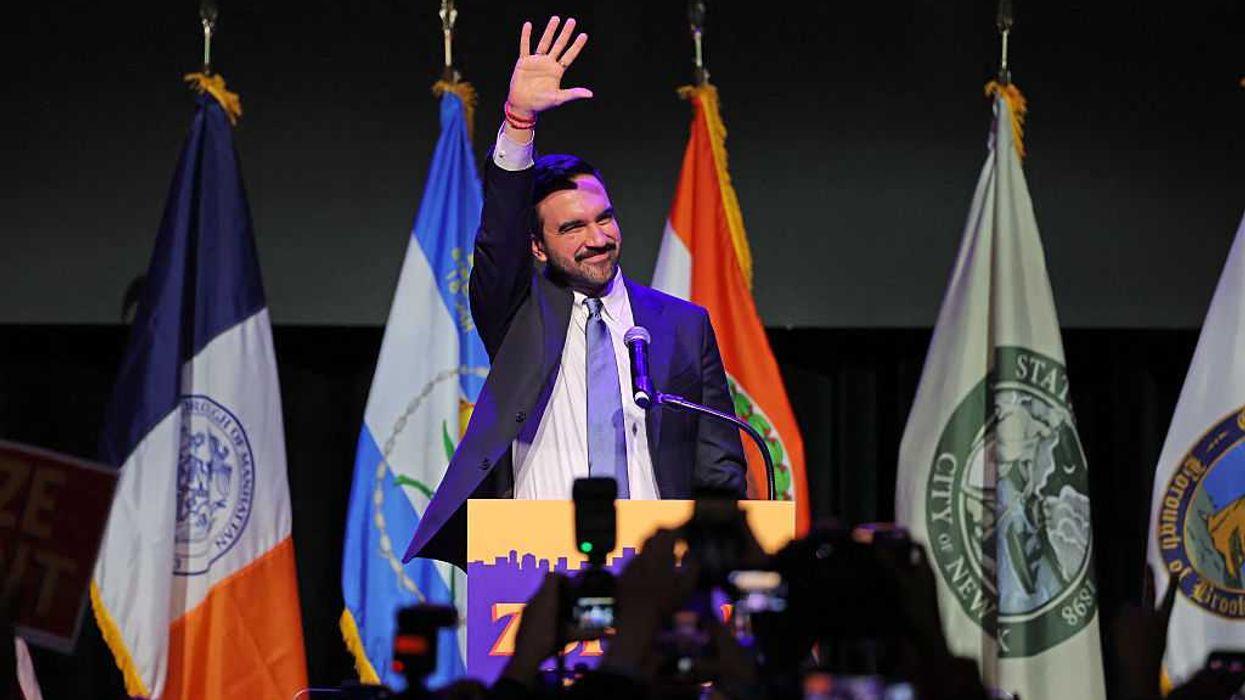Sara Carter, senior Washington correspondent for TheBlaze, joined The Glenn Beck Program Monday night to talk to guest host Dana Loesch about the escalating crisis along the border. Recent reports have claimed that the Obama administration spent months preparing for a surge of illegals on the border. What did they know and how did they know it? Sara Carter went into detail on what her investigation has uncovered.
Below is a transcription of the segment:
Dana: Last week, we learned that the federal government was looking for vendors to help escort illegal immigrant children this past January. Here is the exact text posted to fedbizops.gov. It says, “ICE is seeking the services of a responsible vendor that shares the philosophy of treating all UAC with dignity and respect, while adhering to standard operating procedures and policies that allow for an effective, efficient, and incident free transport.”
It says also that “The Contractor shall provide unarmed escort staff, including management, supervision, manpower, training, certifications, licenses, drug testing, equipment, and supplies necessary to provide on-demand escort services for noncriminal/non-delinquent unaccompanied alien children ages infant to 17 years of age, seven (7) days a week, 365 days a year.”
The ad goes on to say that “Transport will be required for either category of UAC or individual juveniles, to include both male and female juveniles. There will be approximately 65,000 UAC in total: 25% local ground transport, 25% via ICE charter and 50%t via commercial air.” So who is paying for this? Oh right, we are. We’re paying for escorts to ease the illegal immigrants’ illegal entry into our country while a Marine sergeant named Andrew Tahmooressi sits in the Tijuana prison.
Now, how exactly did the U.S. government know that 65,000 illegal immigrant children would be arriving across our border? Now, Texas Governor Rick Perry, he couldn’t take Washington’s inaction and the seeming coordination of this border violating effort, so he ordered up a border surge, authorizing the Texas Department of Public Safety to commence surge operations along the border. It comes at a cost of $1.3 million per week, and it’s going to continue through the end of the year.
Attorney General Greg Abbott has requested an additional $30 million in federal funding from the Department of Homeland Security’s Jeh Johnson because at the very least, the federal government could maybe kind of help pay to work a problem that they created, right? The number of illegal immigrants crossing the border is staggering. Get this, border patrol caught 160,000 illegal immigrants crossing the border in the Rio Grande Valley in the first eight months of the fiscal year alone, right?
Health professionals have raised awareness and a lot of concerns asking a lot of questions about the transmission of disease because those crossing likely haven’t received the same immunizations that U.S. children have received. So why are these numbers increasing? One report is that it’s due to amnesty rumors. Maybe it’s due to our lax reaction to the crime of illegal crossing. I mean, we’re loading illegal immigrants onto planes and buses and shipping them to other parts of the Southwest to sort of kind of like spread the flood.
There are stories of border patrol agents acting as surrogate parent instead of policing the border. Of everyone I spoke to who has been to the border who has worked with law enforcement in detaining immigrants as they illegally cross, there is one great absence. All of the people who claim that denying illegal entry into our country is a great evil, none of them are actually at the border helping with this humanitarian crisis.
I know of stories of church pastors in border towns who are sheltering kids to protect them from drug cartels and the elements. I see those; I don’t see the advocates of open borders and amnesty though. I see them using the government to do their charity, and that’s pretty much the extent of it. I mean, does this look like charity to you? Does this look like charity?
Are any of these people even down south to volunteer to process paperwork, care for the detained children? Are they there to help walk immigrants through the legal way to immigrate? No, instead they claim that a desire to observe law is cruel and unusual.
We love immigration in America, and we have every right to be discriminatory that we want the best of the best, the best laborers, the best business owners, the brightest students, but we don’t even require that. We just say can you come here legally? We’re not Ireland with their beyond restrictive immigration policy. We’re not even close to Mexico, whose immigration laws are more draconian than our own.
We simply ask that people respect our sovereignty, respect our citizens, and follow the legal path of immigration the same as every other immigrant. The open border policy and amnesty chaos, and make no mistake, that’s exactly what it is, it’s designed chaos to make policy happen fait accompli. Their anything-goes policy on immigration is actually hurting the people they claim to want to help, the immigrants crossing illegally.
Now, Sara Carter from our D.C. bureau joins us to delve into this issue. So Sara, first off, thanks so much for joining me.
Sara: Thanks Dana.
Dana: I was reading, as you just heard, talking about the fedbizops or whatever .gov, where ICE actually put on, it’s like a Craigslist ad basically asking for escorts. This was back in January. How on earth did they have such keen insight into what our needs would be at the border now, Sara?
Sara: Yeah, you know, Dana, I think a lot of people actually didn’t think this was true. I think they thought that when this showed up on Weasel Zippers, you know, on a website, that they thought this was a false ad. It was not. I contacted my sources at ICE official headquarters. Barbara Gonzalez confirmed that it was in fact an official RFI from ICE and that they were looking for these escorts.
I dug a little deeper and found out that actually there were reports done as early as January 2013 predicting this surge. The administration was well aware of the fact that there was something coming across the border. When you look all the way back to 2010, unaccompanied minors was a little over 5,000. Then we see a big jump in 2011, and now we’re expecting 90,000 unaccompanied minors this year. I think what was surprising to a lot of people, now mind you, this is a DHS, these were DHS studies, U.S. intelligence studies last year that I was able to find out.
They had conducted at least two in January and February, and then in October there was actually an official meeting with high-level DHS officials about this. And the only thing that they were really concerned about according to sources that I spoke with was bed space. They were not concerned at all with notifying the local communities about this increased surge that they were expecting. They were not concerned about notifying the appropriate authorities or putting any stopgap measures into stopping these folks from coming over.
And you mentioned a lot of the reasons and a lot of the potential harm that comes from this large immigrant surge coming from Central America into the United States.
Dana: What is making these numbers jump up so much? I mean, you had said, and you’ve covered this and done such a great job for TheBlaze.com. There are stories that there were ads, that some of these immigrants saw, I guess, like in their – tell me the story about that. Like what is, like ads in their newspapers in Mexico?
Sara: Yes, and it wasn’t in Mexico. It’s actually in Central America. I felt very fortunate that I was able to go out with border patrol sources that were able to get me right to the front lines so when a lot of the illegal immigrants crossed or illegal migrants crossed the border I was able to talk to them. I speak Spanish fluently, and they were very open.
None of them were running away from the border patrol. In fact, they were walking right up to border patrol officials and turning themselves in because they actually believed when they cross the border, once they touched American soil that they would be able to stay here. And when I asked them, you know, you made this long journey, some of them took 15 days, some of these young kids rode on top of a train they call the beast by themselves and then got picked up by cartels along the way and human trafficking organizations that eventually brought them all the way up to the border.
The family units which are the mothers with their children, they went through the same kind of, I mean, really horrific journey from home all the way to the United States border until they cross the Rio Grande, and they said they saw it in newspapers, they heard it on their television on Univision, which is one of the major Spanish language television networks, on their TV shows.
There was even talk of flyers actually being distributed in some Central American towns saying go to America now, and I wish I could get my hands on one of these flyers. I asked all of the migrants if they had any on them, and they didn’t. You know, obviously they took the flyers and got rid of them on their long journey, but they actually had some flyers in some of the towns.
And they said that family members were actually contacting them from the United States and saying now is the time to come in, the administration is not going to send you back. And look, by all accounts, if you’re an unaccompanied minor, they’re not going to send you back. And if you’re here with your children, they’re not going to send you back right now.
You know, despite what we hear coming out of the Obama administration, when you talk to ICE officials, when you talk to DHS officials about this, when you talk to border patrol officials, there are no plans to send a lot of these folks back.
When you think about how many people are released in the United States every year, every year, just with an order to appear in court, piece of paper, and they never show up at court, and they never get returned back home, what makes us think that right now we’re going to return children where we have no idea where their families are back to their countries of origin? I would be surprised if the Obama administration moves on this.
Dana: And how many, Sara, I know that they are loading up illegal immigrants on trains and planes and sort of spreading the deluge that’s coming across the border. Do we know how many are being relocated?
Sara: Oh yeah, I mean thousands. We’re looking at estimates right now, inside the Rio Grande Valley sector alone are over 1,000 illegal immigrants crossing a day, over 36,000 a month. This is just in the Rio Grande Valley area. So this is not including, this includes actually unaccompanied minors which are about 200-plus, give or take, a day.
On the morning that I left Texas, Dana, and I love Texas, and I’ve got my own pair of cowboy boots too, but on the morning that I left Texas, Wednesday morning, 300 people showed up in one shot right at Anzalduas State Park across the Rio Grande. I mean, this was just one group. I think this was like the biggest group, what they call groupings, that they had so far. So 300 people just showed up in one shot right across the river. That doesn’t include all the people coming across the river all day and night and the people preparing to cross.
So what we’re seeing here is an enormous crisis, and you’re right, health officials are very concerned because a lot of the people are being, and for the people themselves, they’re being moved and transported without any type of medical check or medical clearance. And I think this is something that we need to be concerned with.
Dana: What is being done at least, I mean, because you see all the, I mean, these photos are just, like it’s hard to see it, you know, these people in detention centers. It’s hard, I mean, regardless of how you feel about the issue, but at the same time, you know, I listen to what a lot of these health professionals have been saying.
And Sara, you’ve talked about this. We don’t know, obviously they probably aren’t on the same immunization schedule as children in the United States. There are a lot of legitimate health concerns that are here. Is there anything being done at the border to remedy? I mean, what can be done? I mean, honestly, it’s an overflow.
Sara: Well, it is an overflow. This is what’s happening, when the border patrol actually gets like a group, and they bring them to like, let’s say, the McAllen station or the Brownsville station where they’re going to hold them for 48 hours, it’s really the border patrol officials who are doing the first medical clearances. These are men and who the border patrol will tell you, we have no medical training whatsoever. If we see bumps, if we see someone that’s sick, we’re going to send them to a doctor.
There’s very few doctors that they have actually checking out these patients. I know that the U.S. Coast Guard has sent some medical professionals to the facilities. I know that the WHO is trying to do some vaccinations, but they’ve already uncovered multidrug resistant tuberculosis, hepatitis, yeah, I mean, cholera, yeah, it goes on and on.
Dana: I know John Boehner said that he wants to bring in the National Guard. Is that something that’s going to, Boehner finally said this, do you think that’s something that’s going to happen?
Sara: I definitely think it’s something that’s possible if the flow doesn’t stop because part of the problem is not the people that are just coming across and turning themselves into border patrol, it’s all of the open spaces, which is why Governor Rick Perry was so concerned and had, you know, the Texas Department of Public Safety out there because a lot of the areas aren’t being guarded by border patrol.
While border patrol is taking care of all of these unaccompanied children and people, the drug cartels are moving contraband into the United States. They’re also seeing heavy flow of other traffic.
Dana: And exploiting these people too.
Sara: That’s right. That’s absolutely right, Dana.
Dana: Excellent coverage on this, Sara. I so appreciate it, and thanks for joining me this afternoon. We’re definitely going to watch all of these developments and turn to you for our information as well, so thank you for that. Have a great afternoon.
Sara: Thank you.

 Brandon Bell / Staff | Getty Images
Brandon Bell / Staff | Getty Images
 Europa Press News / Contributor | Getty Images
Europa Press News / Contributor | Getty Images ANGELA WEISS / Contributor | Getty Images
ANGELA WEISS / Contributor | Getty Images Eric Lee / Stringer | Getty Images
Eric Lee / Stringer | Getty Images